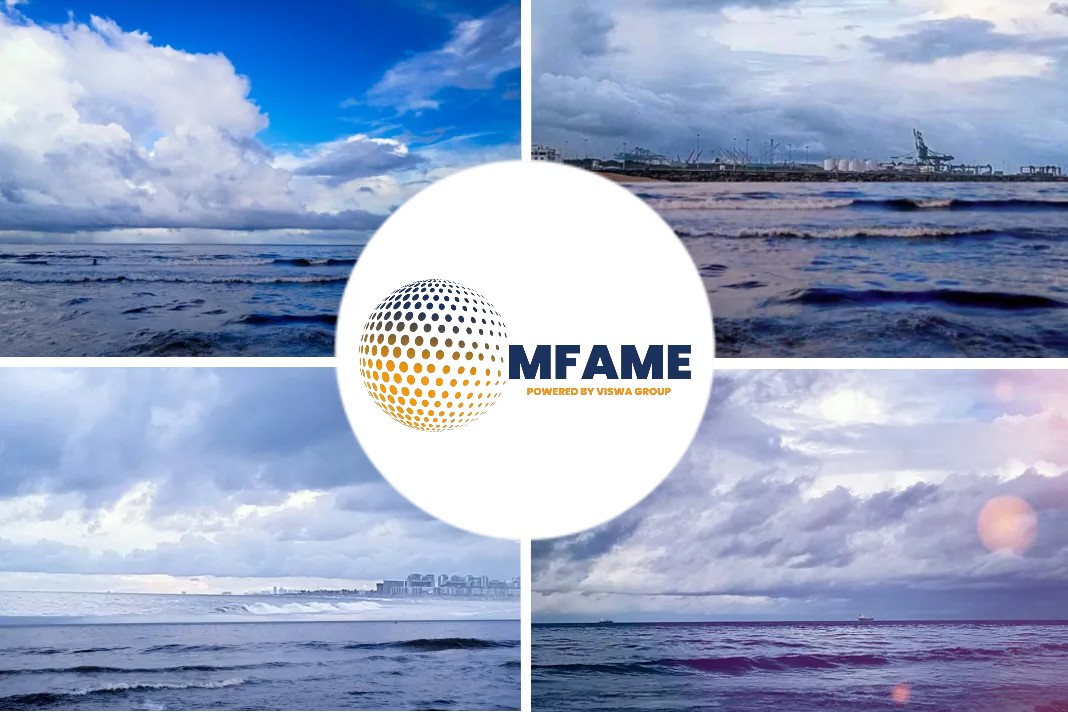
Still in the development stage, onboard carbon capture will support the abatement of ship emissions and provide a valuable component for the production of low-carbon alternative fuels, reports Riviera.
IMO GHG reduction targets
Onboard carbon capture technology will be pivotal in meeting IMO GHG reduction targets and underpinning the creation of low-carbon fuels, but for shipping, it is frustratingly still at its earliest stages of development.
“Carbon capture will help to abate certain parts of the emissions, but it will also enable hydrogen production in large scale, like blue hydrogen and lead to the to the production of alternative low-carbon fuels through a circular economy,” said ABS Global Sustainability Centre sustainability managing principal, Illias Soultanias.
At Riviera Maritime Media’s Maritime Decarbonisation Conference, Asia in Singapore in April, Mr Soultanias spoke to delegates about shipping’s role in the carbon capture, usage and storage (CCUS) value chain, highlighting the technical, operational and commercial challenges of onboard carbon capture and storage.
“Industry research indicates that onboard carbon carbon capture will be critically important to reaching IMO’s emissions targets for 2030 and 2050,” said Mr Soultanias, adding, “we are expecting carbon capture systems to be investigated thoroughly.”
Several industry collaborations are underway, including one in which ABS has issued an approval-in-principle (AiP) to use carbon capture on the Stena Bulk MR tanker Stena Impero as part of Project REMARCCABLE.
Mr Soultanias detailed three different methodologies for onboard carbon capture: pre-combustion capture; post-combustion capture; and oxy-fuel carbon capture.
Carbon capture
Based on the technologies maturity and cost effectiveness, Mr Soultanias said: “Post-combustion carbon capture is the most favourable. It lets us deal directly with CO2 in the flue gas after combusting the primary hydrocarbon fuel.”
But while onboard carbon capture with chemical absorption is technically feasible, there are real issues to address before widespread commercialisation.
Mr Soultanias said ships have limited space and power to facilitate all the additional energy requirements for the ancillary systems needed for carbon capture, as well as the liquefaction that may be required and the handling and storage of the liquefied CO2 onboard.
“The aspects we need to take into account are how much carbon needs to be captured to satisfy targets in line with IMO requirements, such as CII,” said Mr Soultanias. “We have to keep in mind that the effort needed to capture CO2 will not necessarily be a linear relationship between the effort and the actual capture,” he noted. High capex and opex are factors, too, said Mr Soultanias. He pointed out that as the system’s efficiency and capture rate increase, the energy and costs related can increase prohibitively.
Increased energy requirements for onboard carbon capture result in higher fuel consumption — up to a 45% increase, according to case studies by the Maersk Mc-Kinney Møller Center for Zero Carbon Shipping. The NGO does not expect onboard carbon capture to reach commercial availability by 2030.
“Of course, once the carbon is captured, we need to see what happens with that and there will be the utilisation or sequestration at some point, but definitely there will be the need to transport and transfer captured CO2 from the point of capture to the point of utilisation,” said Mr Soultanias.
He said ABS is actively investigating the development and design of liquid CO2 carriers. “The last part of the utilisation of captured CO2 will be the area that allows the captured CO2 to be used for the production of synthetic fuels, to drive decarbonisation even further and to give solutions to some of the hard-to-abate sectors,” he said.
Data shared by Mr Soultanias showed that CCUS was forecast to account for 15% of avoided emissions by 2070.
Did you subscribe to our daily Newsletter?
It’s Free! Click here to Subscribe
Source: Riviera























